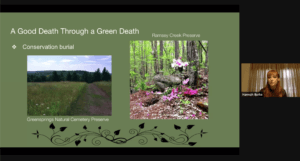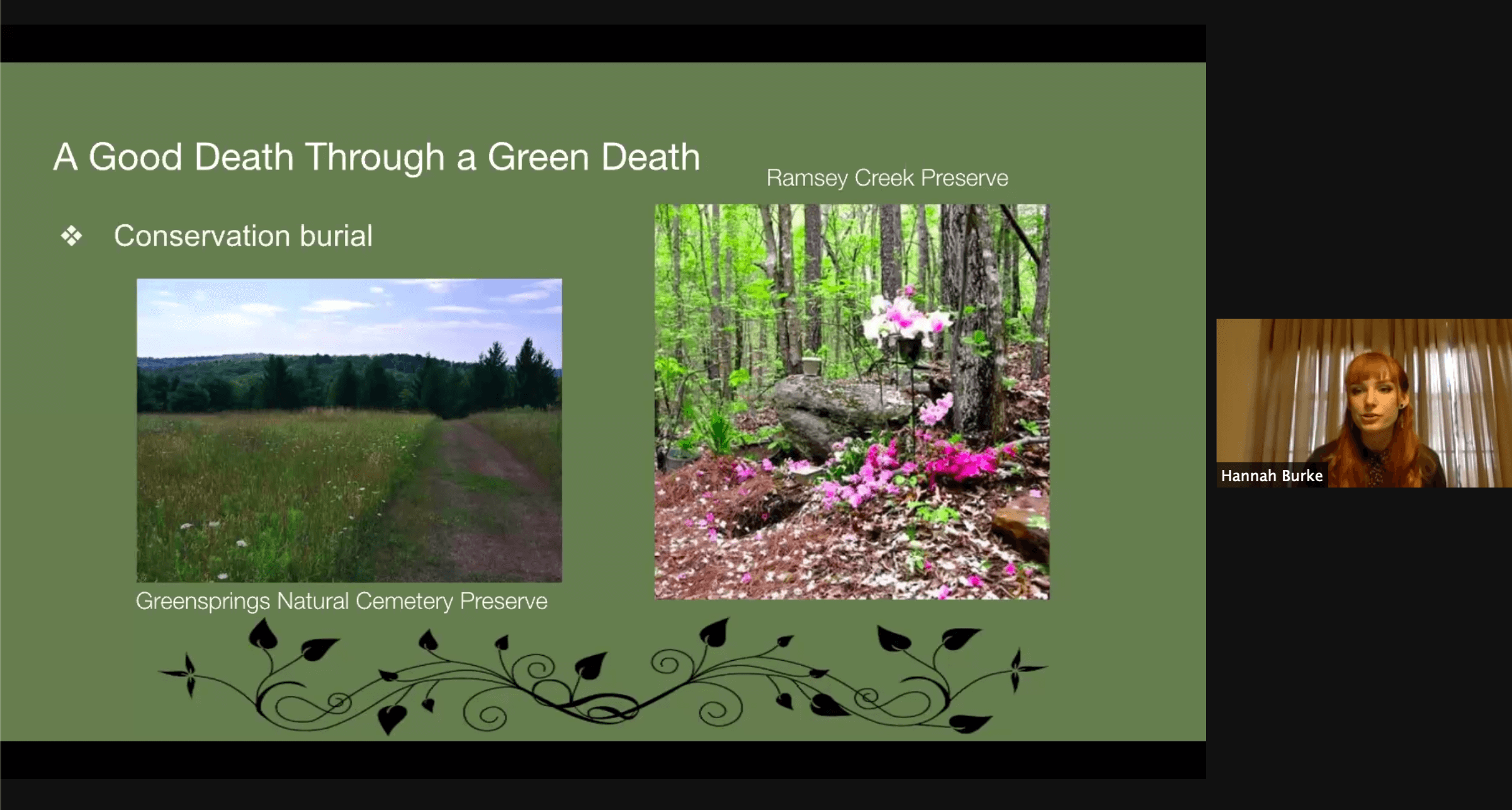By Muge Gore
On Saturday, March 27, the Institute for Global Understanding (IGU) presented the Monmouth Student Panel during its biennial symposium, which showcased five students and their state-of-the-art projects revolving around the intersection between human rights and the environment. Dr. Melissa Alvaré, a lecturer in the Department of Political Science and Sociology, moderated the event. Hannah Burke, a graduate student in the School of Social Work, presented her topic, “Death and Sustainability: Post-Mortem Conservation”; Jessica Stos, a graduate student in the Department of Professional Counseling, presented her topic, “Nature’s Rights: A Discussion on Mother Earth, Cultural Sensitivity, and the Impact of Nature’s Constitutional Rights on Indigenous People”; Katelyn Snyder, a graduate student of English, presented her topic, “Intersectionality of Social Justice Concerns with Art and the Environment: A Case Studies of Pictures of Garbage”; Dan Conte, an undergraduate student in the Department of Political Science and Sociology, presented his topic, “Ocean Acidification as a Climate Change Harm in the Inter-American Court System”; and lastly, London Jones, an undergraduate student in the Department of Communication, presented her topic, “Keep the Culture, Change the Fate: Responding to the Threat of Climate Gentrification to Asbury Park’s West Side.” Together, these students informed and inspired the audience on their cutting-edge topics.
 The panel began with MSW graduate student Hannah Burke on the innovative and useful practice of embalming. During the American Civil War, physicians preserved the bodies of soldiers who had died in battle and prepared them to return home intact. However, the process involved harsh chemicals, and the funeral industry quickly turned into a funeral market. Today, embalming a human body typically costs between $500 and $700, and funeral costs range from $7,000 to $12,000. This industry makes about $15 billion a year from grieving families. Burke explained how the practice of contemporary embalming has led to deforestation due to harsh chemicals, including the release of carbon monoxide into our environment, and to the “death denial” phenomenon in modern American society. In relation to this, embalming today does not involve family and loved ones in the process. Burke suggested that instead of the mainstream tradition of funerals, some eco-friendly options are natural and conservation burials. Both practices are not only ecosystems-friendly but cost significantly less than traditional funerals. Burke’s strategy captures the true essence of environmentally friendly methods to promote a more sustainable future.
The panel began with MSW graduate student Hannah Burke on the innovative and useful practice of embalming. During the American Civil War, physicians preserved the bodies of soldiers who had died in battle and prepared them to return home intact. However, the process involved harsh chemicals, and the funeral industry quickly turned into a funeral market. Today, embalming a human body typically costs between $500 and $700, and funeral costs range from $7,000 to $12,000. This industry makes about $15 billion a year from grieving families. Burke explained how the practice of contemporary embalming has led to deforestation due to harsh chemicals, including the release of carbon monoxide into our environment, and to the “death denial” phenomenon in modern American society. In relation to this, embalming today does not involve family and loved ones in the process. Burke suggested that instead of the mainstream tradition of funerals, some eco-friendly options are natural and conservation burials. Both practices are not only ecosystems-friendly but cost significantly less than traditional funerals. Burke’s strategy captures the true essence of environmentally friendly methods to promote a more sustainable future.
Student panelist Katelyn Snyder, a graduate student in the Department of English, delivered a presentation on a subject that dovetails with Burke’s approach. Snyder presented on the intersectionality of social justice concerns with art and the environment, diving into a case study of pictures with garbage. Capitalism has contributed to garbage’s proliferation and the tendency for people to physically throw stuff away, with feminism playing an important role in the rhetoric’s effectiveness on pollution. Through an analysis of the documentary titled Waste Land and with a collection of pictures of garbage, Snyder argued that aesthetic rhetoric and constitutive rhetoric regarding climate change and pollution allow for an intersectional recognition of how art can reveal the dynamics of class, racism, and gender in connection with pollution. An interesting outlook that Snyder addressed was an art piece of an Afro-Brazilian woman who depicts the normative gender roles of female frailty and women’s domestic labor in Brazil. Poverty, race, and gender set a true divide, as Brazilian history shows, because marginalized populations experience the most significant environmental challenges. Her presentation set the stage for addressing several different human rights and environmental concerns that left the audience searching for more answers.
Burke’s and Snyder’s presentations were followed by compelling climate justice presentations from London Jones and Dan Conte, which addressed local and global dimensions of these challenges. If we continue to conduct these important educational conversations locally and globally, we may proactively address issues such as environmental degradation, intersectionality, carbon emissions, a shifting death culture, and climate gentrification.

